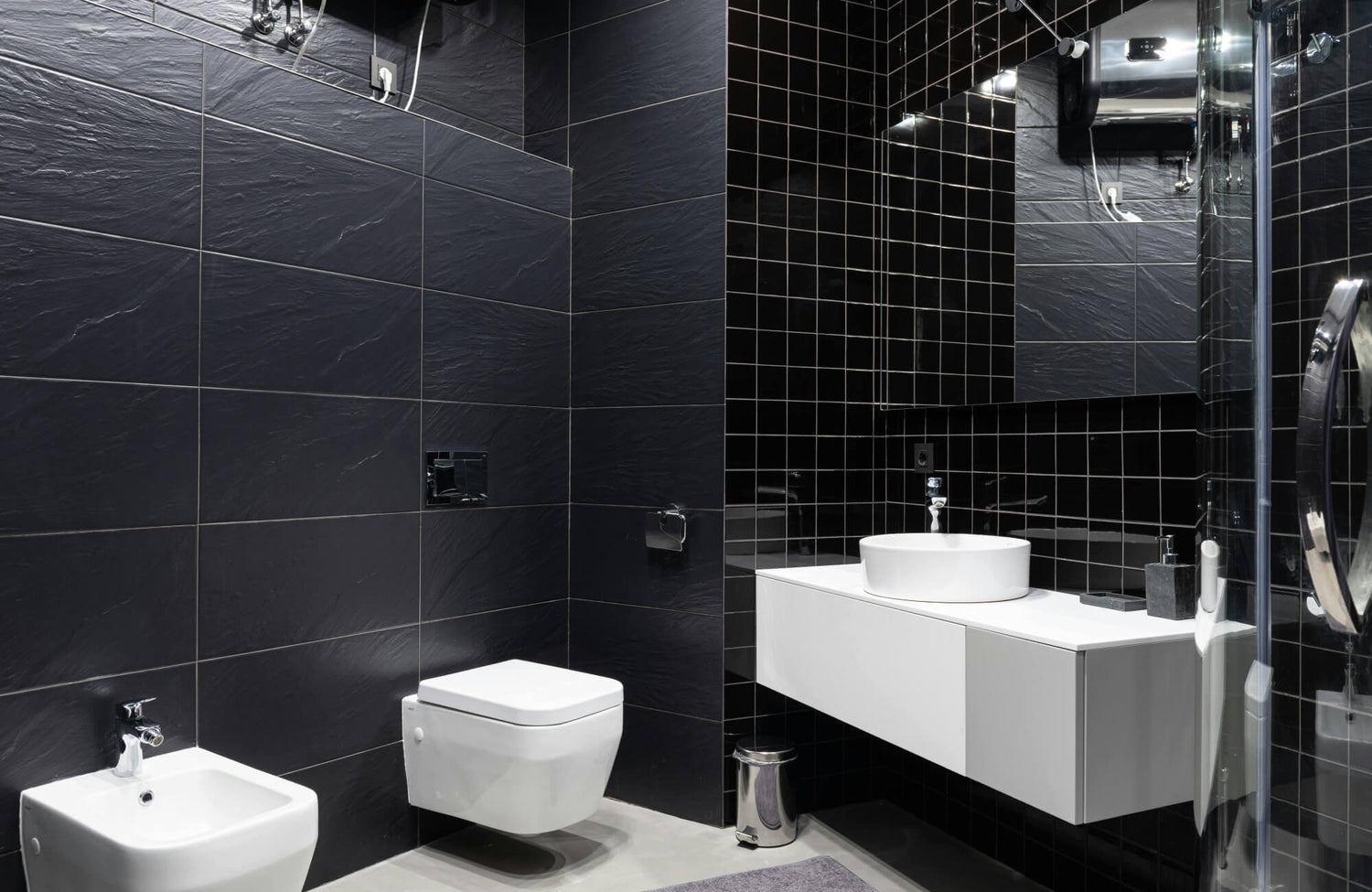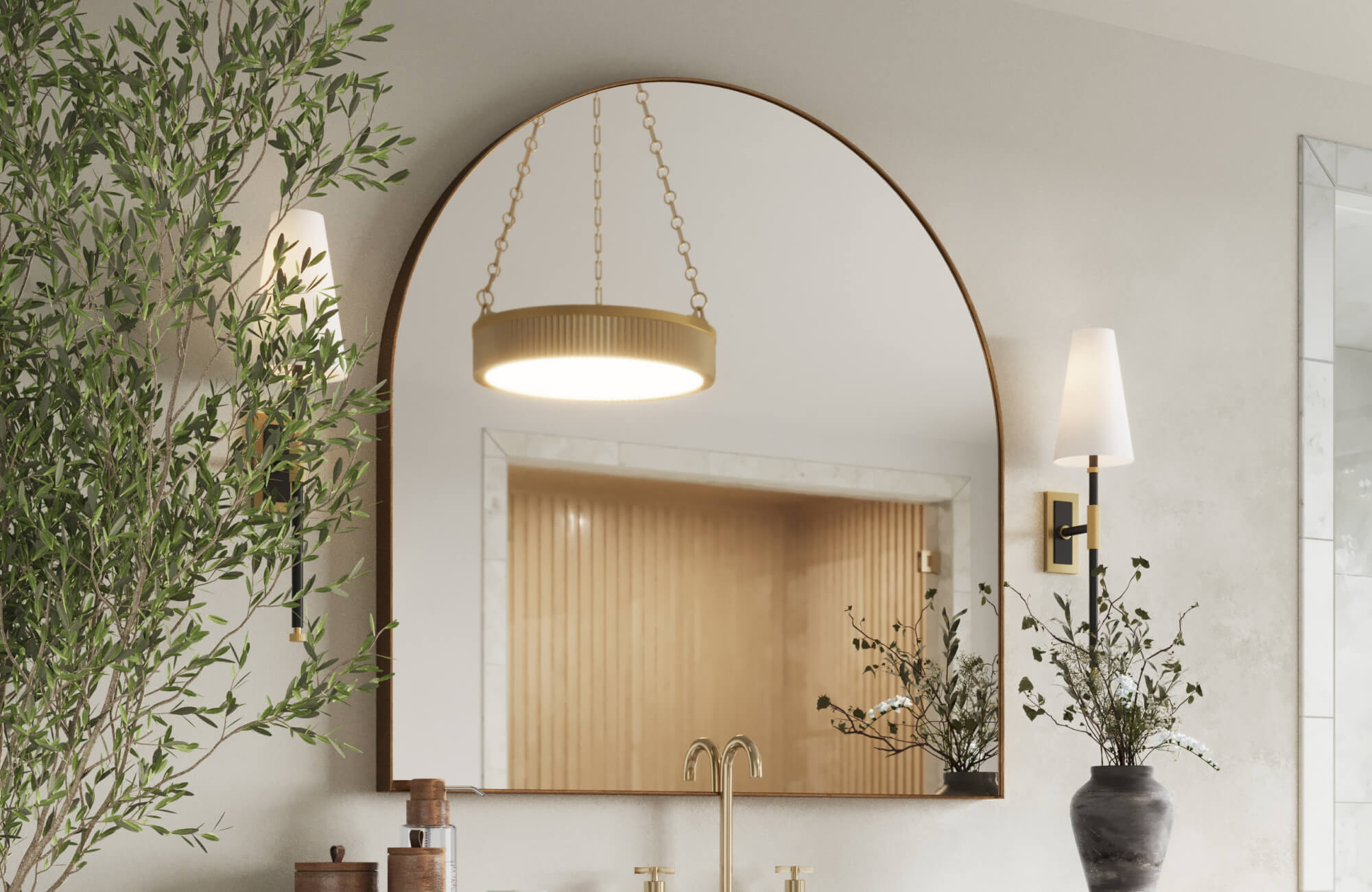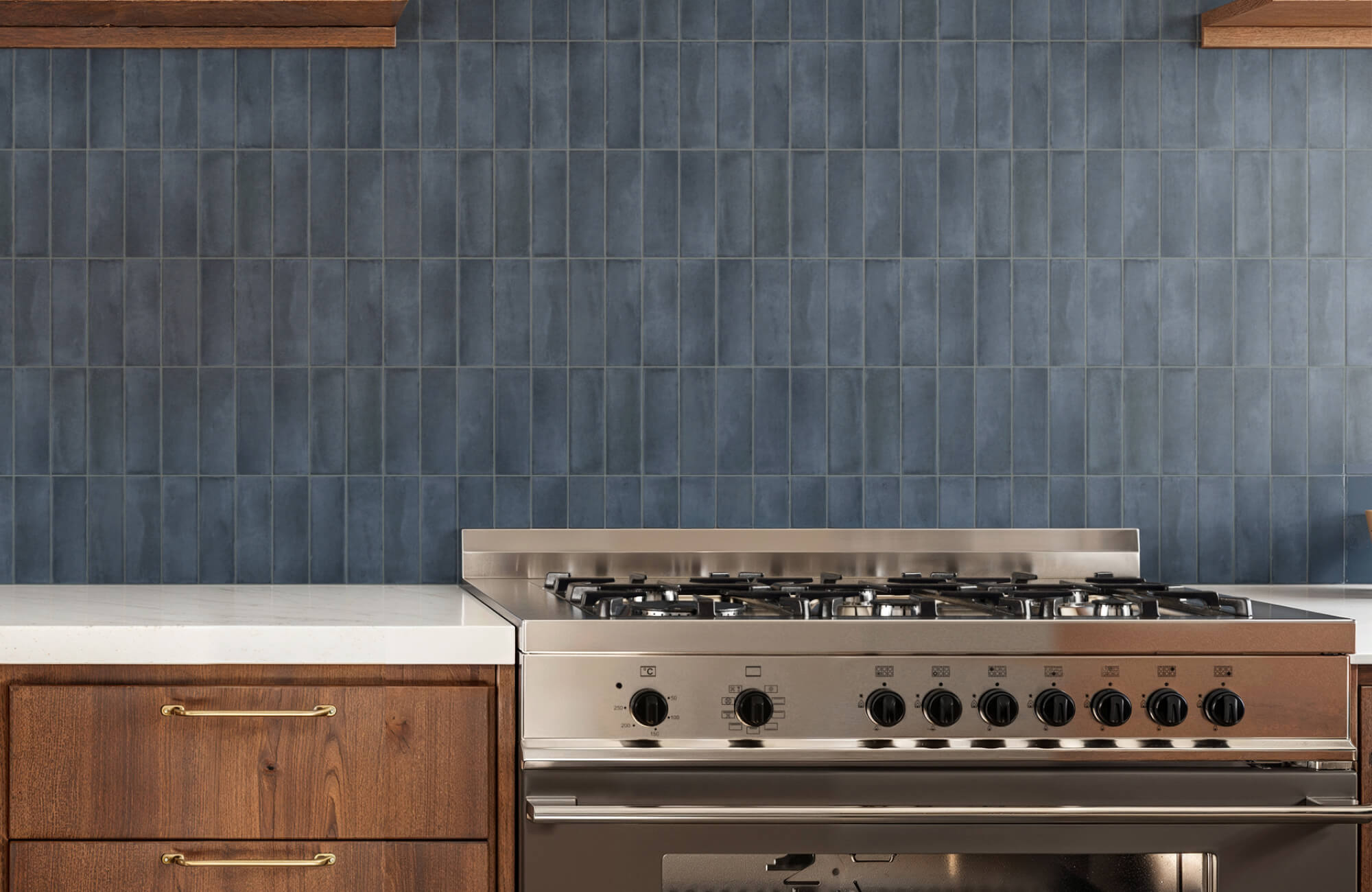When you choose black bathroom tiles, you’re bringing in a bold, elegant look that transforms the entire space. Their sleek, modern appeal makes them a popular choice for those who want something both stylish and timeless. But with that eye-catching finish comes a common question that many don’t consider until after installation: how do these black bathroom tiles respond to everyday water use?
In this article, we’ll explore six distinct perspectives to help you fully understand what happens when black tiles come into contact with hard water. From the science behind mineral deposits to tips for long-term care, each section offers practical insights that will help you make informed decisions. Whether you're planning a bathroom renovation or simply want to care for the black tiles you already have.

What Makes Hard Water Stains Visible on Black Tiles
Black tiles are known for their bold, refined look, but that same deep color can unintentionally spotlight every mineral deposit left behind by hard water. To help you understand why these stains appear more noticeable on dark surfaces, we’ll start by breaking down the chemical processes involved and then examine how contrast affects what we see. This foundational understanding sets the stage for managing and preventing buildup effectively.
Chemistry of Hard Water
Hard water carries dissolved minerals like calcium and magnesium. As the water dries on your tile surface, these minerals remain and crystallize into calcium carbonate. On lighter tiles, this residue might blend in. On black surfaces, however, it stands out sharply. Understanding this process helps explain why hard water needs to be addressed early, before deposits have a chance to dull the surface.
Visual Contrast and Perception
One of the unique characteristics of black tile is how it interacts with light and color, especially when it comes to hard water. Because dark surfaces naturally create stronger contrast, even faint mineral residue becomes more noticeable. What might blend in on white or beige tile stands out more clearly on black, especially in well-lit spaces. But rather than being a drawback, this visibility simply helps you spot buildup early, so you can address it with minimal effort and keep your space looking intentional and well cared for.
That’s where thoughtful tile selection plays a role. The photo above features Edward Martin’s Adeline 1x4 Matte Porcelain Mosaic Tile in Midnight, which pairs a deep black tone with a soft, matte finish. Its subtle texture adds dimension and warmth, while still allowing you to easily see and manage any surface residue. In bright or high-contrast spaces, this visual clarity also works to your advantage, encouraging a light, consistent routine that protects the clean, striking look you intended from the start.

How Hard Water Impacts Different Tile Finishes
Different tile finishes don’t just change the look of a surface; they directly affect how hard water interacts with it. Here, we focus on how surface texture and sheen respond to mineral exposure, helping you choose a finish that fits both your design goals and your level of upkeep.
Glossy vs Matte Surfaces
Glossy finishes have a smooth, highly reflective surface that amplifies light. When water evaporates and leaves behind minerals, these residues sit on top of the finish, where they're easily illuminated and highly visible. Glossy black tiles give a clean, modern feel but require frequent attention to keep buildup from standing out.
In contrast, matte finishes diffuse light and provide a soft, muted surface. This texture tends to mask light films and mineral spots better than glossy. While not immune to buildup, matte black tiles are less likely to draw attention to it right away, making them a practical option for areas where minimal upkeep is preferred.
A great example is Edward Martin’s Leona 24x24 Matte Porcelain Tile in Nero Marquina, featured in the shower space above. Its natural stone-inspired pattern and matte surface offer a refined, contemporary look while helping to soften the appearance of minor water spots. In moisture-prone areas like showers, this finish provides both style and subtle stain resistance; ideal for those wanting dramatic black tile without constant touch-ups.
Polished and Satin Finishes
Polished black tiles fall between glossy and matte but lean closer to the reflective side. Their ultra-smooth surface offers little grip for mineral residue, so even minor spots are likely to be visible once dry. These tiles provide a high-end aesthetic but do call for more consistent cleaning to maintain their clarity.
Satin finishes, meanwhile, offer a light sheen without the intensity of full polish. They manage to reduce glare while still delivering a sleek, contemporary feel. Though they may occasionally show water spots, satin black tiles typically require less attention than polished surfaces, offering a balanced option for both style and convenience.
Raw and Textured Surfaces
Raw finishes, often unglazed or natural, introduce a tactile, organic dimension to tile design. Their uneven surface allows hard water to settle into tiny crevices and pores. This means mineral buildup may not be immediately obvious but can become more embedded over time.
Textured black tiles behave similarly. With grooves, ridges, or patterns that vary in depth, these finishes create more surface area for hard water to collect and evaporate. Deposits tend to form along grout lines and recessed patterns where moisture lingers. While these textures add character, they also present more opportunities for hard water to leave its mark, especially in frequently wet areas.

Daily Signs That Hard Water Is Affecting Black Tiles
Early detection is key to keeping your black tiles looking clean and sharp. By recognizing subtle changes in their appearance, you can stop minor mineral buildup before it turns into stubborn, hard-to-remove stains.
Cloudy Film After Showering
If you notice a light, misty haze on your tiles shortly after showering, there's a good chance it's a thin layer of mineral film beginning to settle. On black tiles, this often shows up as a subtle gray shimmer that softens the tile’s finish and makes it look slightly dull. Though it might seem harmless at first, allowing it to dry can make the buildup more stubborn over time. To stay ahead of it, try giving your tiles a quick wipe with a soft cloth or squeegee after each use. This simple, consistent habit goes a long way in keeping the surface clean and preventing those minerals from taking hold.
Accumulating Chalky Residue
Keep an eye out for white, chalky buildup forming around faucets, showerheads, and along the edges of your black tiles; these are common spots where water tends to collect and evaporate. That crusty residue is a clear sign of ongoing mineral accumulation from hard water. If you're unsure whether you're dealing with soap scum or mineral deposits, try applying a bit of diluted vinegar to a small area. If it fizzes, you're looking at hard water buildup. Spotting this early also gives you a chance to tackle it with a deeper clean before it becomes tougher to remove.

Effective Cleaning Methods Specific to Black Tiles
Not every cleaner is safe for black tile; some can dull the finish or wear down the surface over time. To keep your tiles looking sharp, it’s best to stick with methods and tools that clean thoroughly without compromising the look or texture.
Vinegar vs Commercial Antiscalants
When it comes to cleaning black tiles, the key is finding a solution that removes mineral buildup without compromising the surface. Vinegar is a popular natural option; it contains a mild acid that helps break the bond between minerals and the tile surface. A simple 1:1 mix of white vinegar and water, left on the affected area for a few minutes before gently scrubbing, can effectively lift most deposits without damaging common black tile glazes.
On the other hand, commercial antiscalants are specifically formulated to dissolve hard water minerals more aggressively. They’re often stronger than vinegar and may work faster on stubborn buildup, but they should always be used as directed. Since these products vary in strength and composition, it’s also important to follow the manufacturer’s guidelines to ensure compatibility with your tile finish and grout. By understanding the pros and limitations of each option, you can choose a method that fits both your tile material and your comfort level with maintenance.
Scrubbing Tools That Protect Finish
Choosing the right tools is just as important as using the right cleaner, especially when working with black tiles. A soft microfiber cloth is a reliable go-to for daily maintenance; it gently wipes away residue without scratching or dulling the surface. For more stubborn buildup, non-scratch pads or nylon brushes are also effective for tackling grout lines and textured areas without causing damage.
To avoid leaving behind streaks or uneven marks, it's best to clean using a gentle circular motion. This technique helps distribute pressure evenly and maintains the integrity of the finish. With the proper tools and careful technique, you can effectively remove mineral buildup while keeping your black tiles looking polished and smooth.

Preventing Hard Water Stains on Dark Surfaces
Though regular cleaning keeps your tiles looking sharp, preventing stains from forming in the first place is even more effective. With a few simple, proactive measures, you can greatly reduce hard water exposure before it ever has a chance to settle on your black tiles. This not only protects their appearance but also makes long-term maintenance much easier.
Water Softening Options
One of the most effective ways to prevent hard water stains on black tile surfaces is to address the problem at its source. Whole-house water softeners work by replacing calcium and magnesium, the minerals responsible for buildup, with sodium ions, significantly lowering the chances of deposits forming on your tiles. This option is ideal if you're looking for a long-term solution that benefits your entire plumbing system.
However, if a full system feels like too much, there are more targeted alternatives. Point-of-use softeners or shower-specific filters offer another simpler, more affordable approach while still helping to minimize mineral exposure on your black tiles. When considering these options, it’s helpful to weigh factors like cost, ease of installation, and how they’ll work with your tile setup. Choosing the right system for your home also ensures cleaner surfaces and less effort in keeping them that way.
Routine Maintenance Habits
Simple habits can make a big difference when it comes to preventing hard water stains on black tiles. A quick wipe-down after each shower helps remove lingering moisture before it has a chance to leave mineral deposits behind. Keeping a squeegee or microfiber cloth nearby makes this step feel like a natural part of your routine.
In addition to daily care, it's a good idea to check grout lines and tile edges weekly. These areas often collect water and are the first to show signs of buildup. If you notice any chalky residue forming, spot-clean it right away to stop it from setting in. With just a few minutes of regular maintenance, you’ll keep your black tiles looking fresh and avoid the frustration of deep cleaning later.

Long-Term Care for Black Tile Aesthetics
Maintaining black tiles shouldn’t feel like a chore. With the right approach, you can keep them looking crisp and refined for years to come. From protective treatments to occasional professional help, a few smart strategies go a long way in preserving their beauty over time.
Sealants and Protective Coatings
To keep black tiles looking their best over time, many people turn to protective sealants. A high-quality sealant helps repel water and minerals, preserving the tile’s rich color and surface finish. For best results, it’s important to choose a product designed specifically for high-humidity spaces like bathrooms and to reapply it every 12 to 18 months to maintain its effectiveness.
That said, not all tiles require sealing. Edward Martin’s Palmer 3x12 Glossy Porcelain Tile in Nero, as featured in the photo above, is designed with a resilient finish that eliminates the need for additional sealants. Its glossy surface delivers striking visual depth while simplifying long-term care, ideal for anyone seeking a dramatic, high-end look with less maintenance. For other tile types or high-moisture areas, applying a protective coating can still offer added assurance and help extend the life of your tile’s refined appearance.
Professional Restoration Services
Even with consistent care, black tiles can gradually develop faint stains or lose some of their original luster. When that happens, professional tile restoration can also be a smart next step. Experts use specialized cleaning and polishing techniques designed to safely remove buildup and restore the tile’s surface to its original finish.
To get the best results, it’s equally important to choose a reputable service provider. Look for professionals with experience working specifically with black tiles, as they’ll understand how to treat the material without causing damage. Knowing what to expect, such as inspection, deep cleaning, refinishing, and sealing recommendations, helps you feel confident throughout the process. Factoring in the cost ahead of time also allows you to plan for maintenance without surprises. In the long run, periodic restoration can help extend the life of your tile and keep it looking as striking as the day it was installed.
Keeping Your Black Tiles Looking Their Best
Now that you understand how hard water affects black tiles, from buildup and surface finishes to cleaning and prevention, you’re ready to keep them looking their best for years to come. With the right tile choice, a few simple habits, and a little long-term care, you can also preserve that bold, elegant finish without the hassle.
If you’re still exploring options, we’re here to help. Contact us for personalized support, or use our augmented reality tool to see how our tiles will look in your space before committing!







